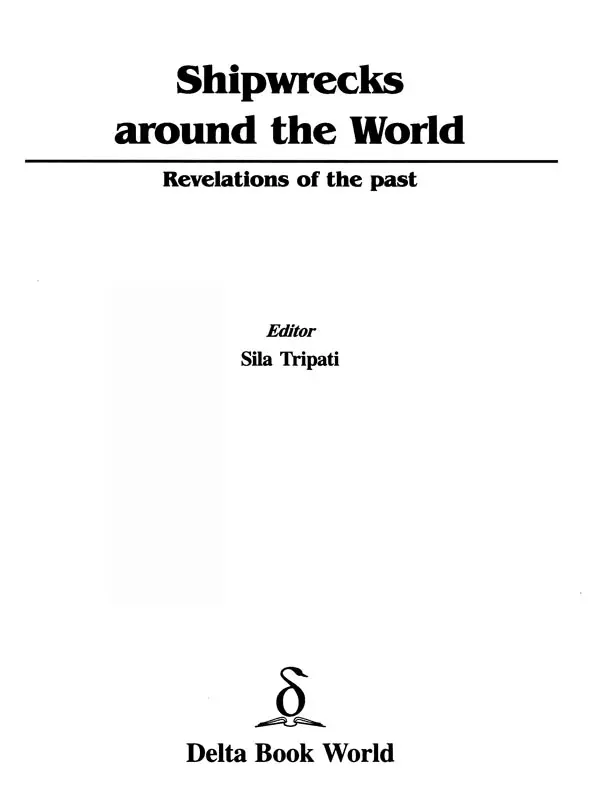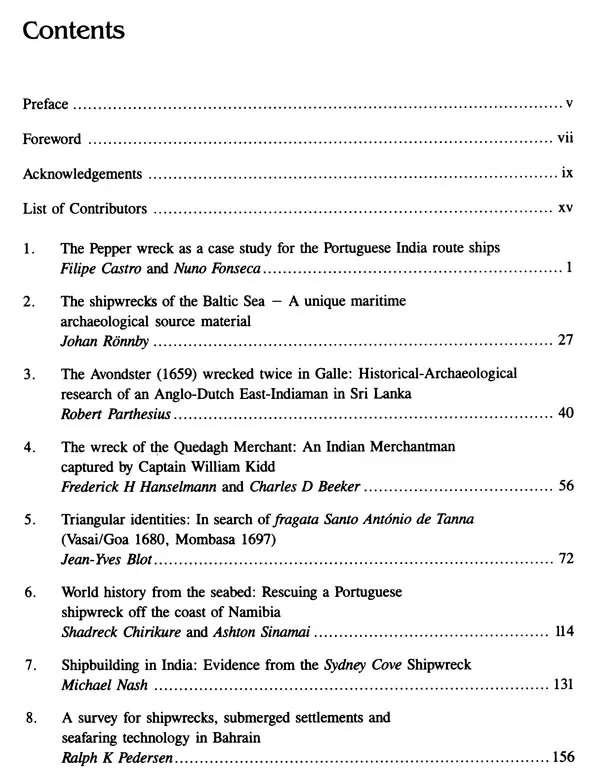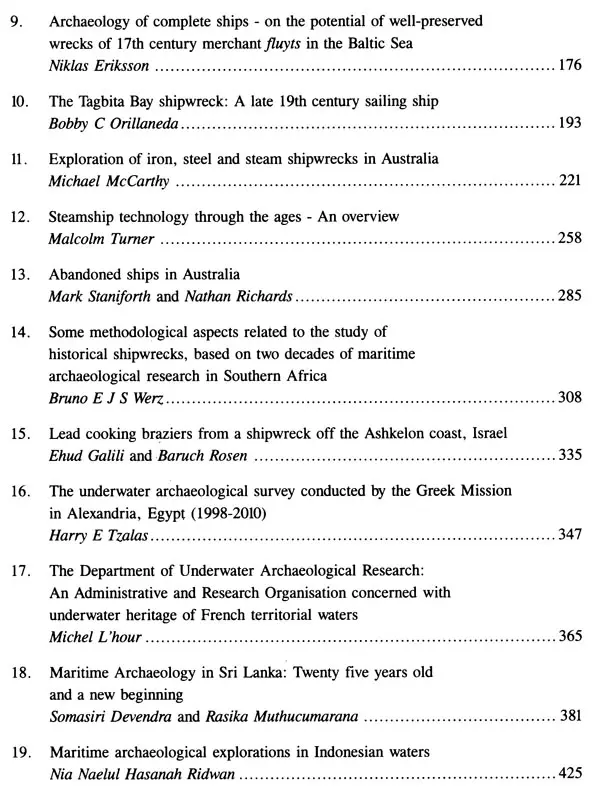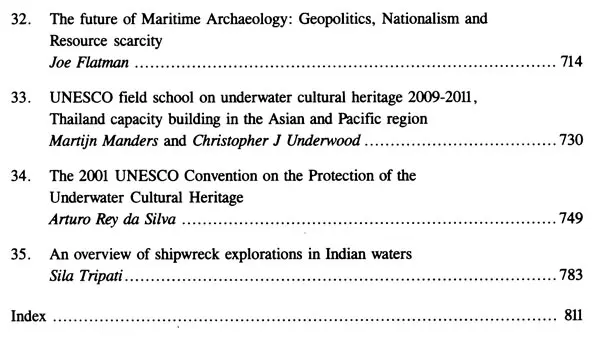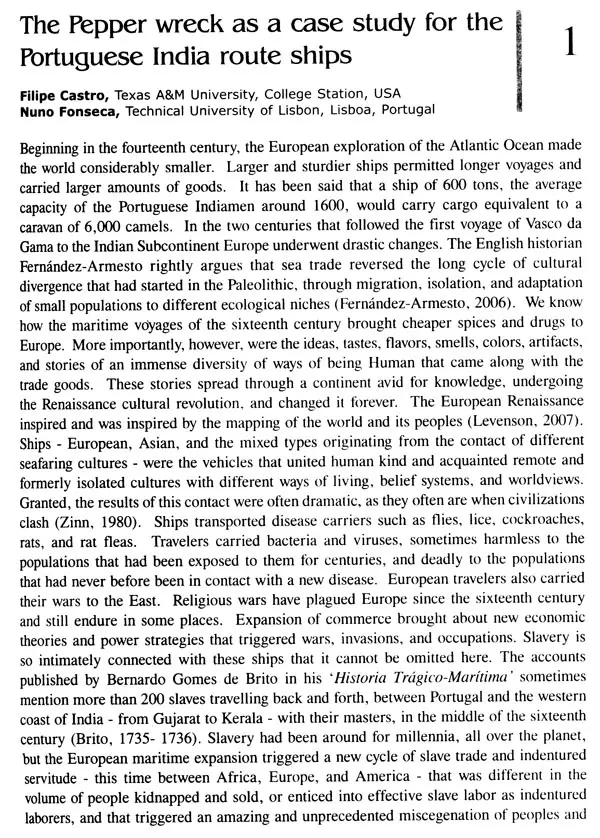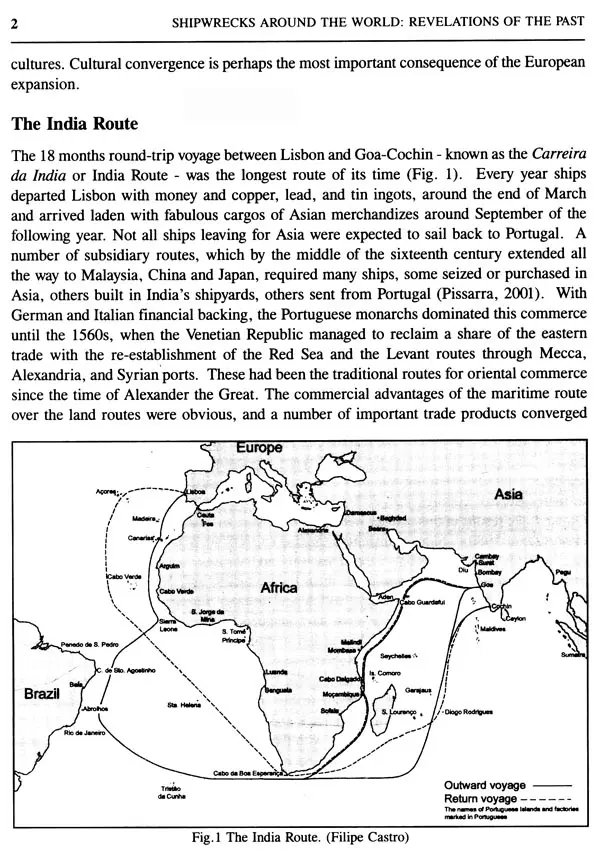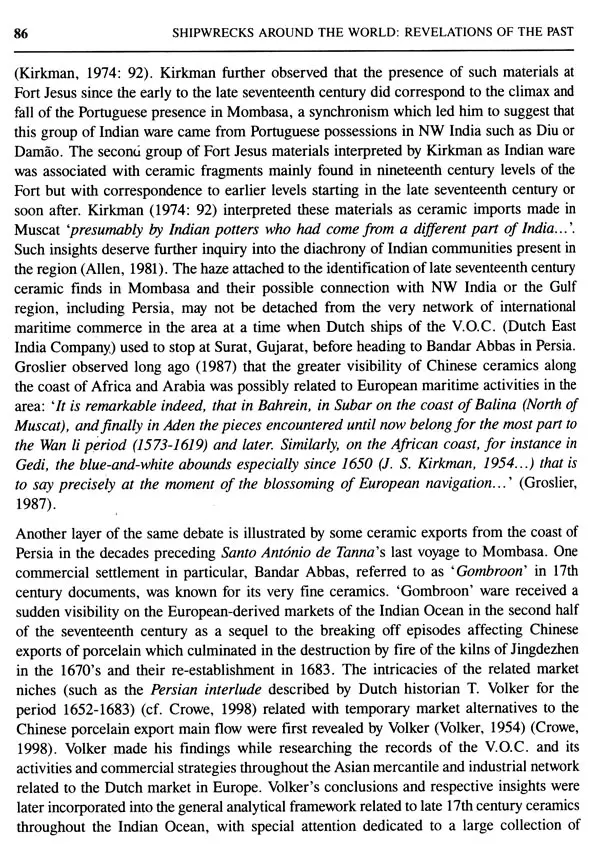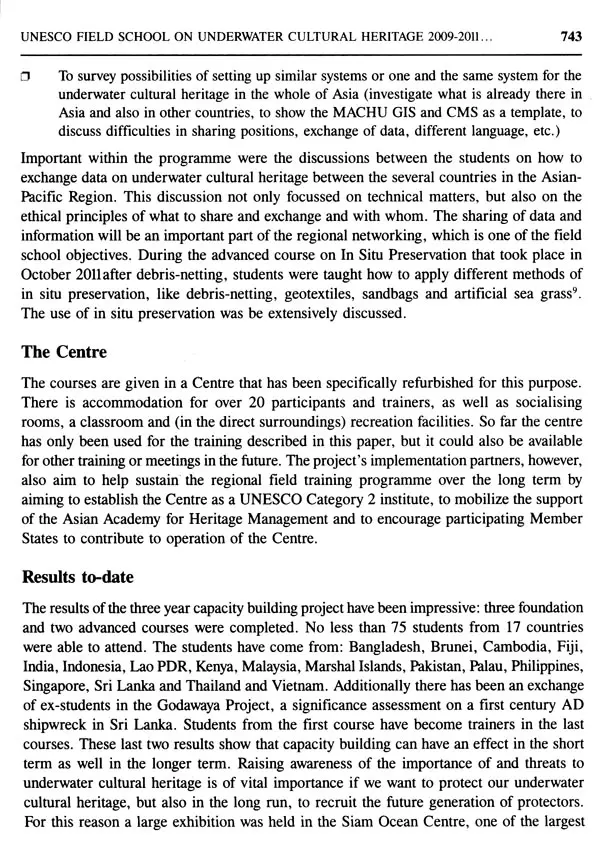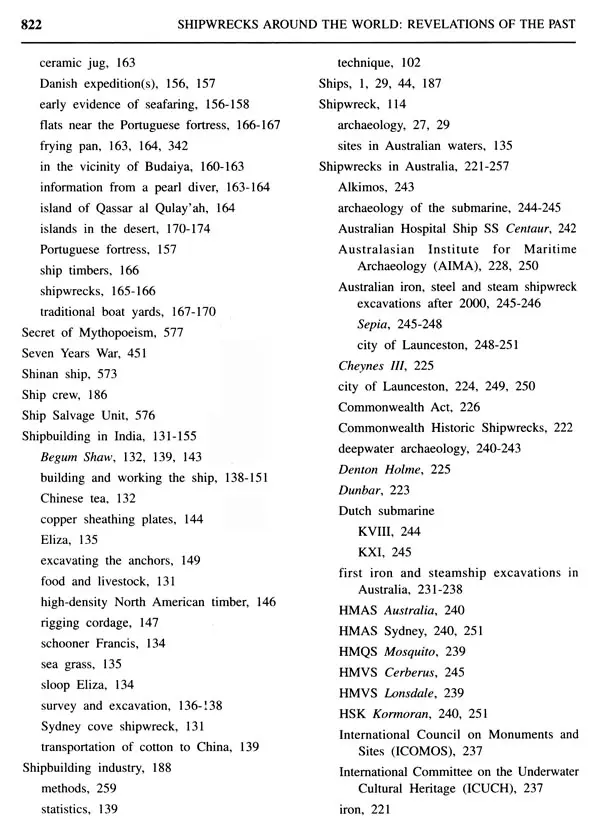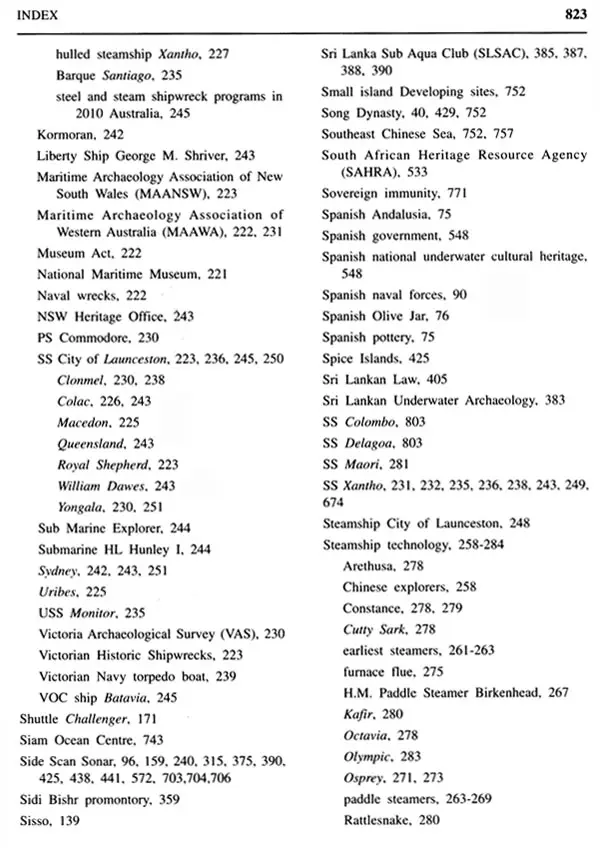About the Book Shipwrecks Around the World: Revelations of the Past In recent years more people and institutes have realised the importance of our maritime past and the need to save the remains from the ravages of time and illegal activities through recently developed tools and scientific methods of maritime archaeology. The developed scientific techniques have helped to make maritime archaeological studies more systematic. And now it is possible for archaeologists to reconstruct in detail the daily lives onboard, commerce and technology from findings such as cargoes, personal belongings and ship remains. 'Shipwrecks around the World: Revelations of the past', covers the story of many shipwrecks from the 15th century onwards, from the Pacific to the Mediterranean, from the north Atlantic to south Atlantic, from Europe to Australia, each shipwreck encapsulating a moment in time and thus illuminating an entire era. The book contains 35 significant and scholarly articles written by specialists involved in the scientific survey of shipwrecks. In addition to papers on shipwrecks, there are papers on conservation of shipwreck finds, and UNESCO Field School on Underwater Cultural Heritage 2009-2011, Thailand, capacity building in the Asian and Pacific Region, and the 2001 UNESCO Convention on the Protection of the Underwater Cultural Heritage. The book contains illustrations of lost ships, drawings supported by original maps and a good number of both inland and underwater photographs of artefacts and antiquities that were recovered and documented in the course of exploration and excavation. Undoubtedly this book will fascinate, enhance the knowledge of researchers and scholars and provide them with an insight into shipwrecks. Shipwrecks around the World also provides one with a positive look at future sites and an exciting glimpse into deepwater shipwreck findings.
About the Author Sile Tripati (1962) is a Maritime Archaeologist with the CSIR-National Institute of Oceanography, Goa, India. He specialises in shipwrecks, stone anchors, maritime trade and submerged ports of the Indian subcontinent and has published widely on the subject.
Foreword Shipwreck studies occupy a special place in maritime archaeological research. The study of a shipwreck reveals the history of the ship and provides knowledge of maritime trade, but its importance is enhanced if the ship was associated with some significant event(s) or person(s). Prior to the commencement of shipwreck explorations in 1960s, scholars like Peter Throckmorton and Joan du Plat Taylor were aware of the fascinating discoveries of a bronze bust and copper ingots by fishermen off Turkish coast in the Mediterranean Sea. This discovery inspired the scholars to begin shipwreck archaeology as an academic discipline. At the end of 1959. Throckmorton inspired George Bass undertook studies in nautical archaeology triggering interest among scholars that led to the establishment and growth of this discipline in different parts of the world. The UNESCO has estimated that over 3 million undiscovered shipwrecks are lying on the ocean floor. So far, hundreds of shipwrecks have been explored both in marine and fresh waters throughout the world. This study offers unique information about the past because artefacts found underwater are often better preserved and in larger quantities than those found on land. This safe site advantage, together with today's tools and technology, enables the archaeologists explore deepwater wrecks. While this study was growing in different parts of the world, it took its birth over 20 years ago in the Indian subcontinent at the National Institute of Oceanography [Council of Scientific and Industrial Research], Goa, India. The first shipwreck was explored in Sunchi Reef off Goa. Subsequently, shipwrecks were explored in the waters off Goa, Lakshadweep, Tamil Nadu and Odisha. The finds not only gave us knowledge of our past maritime contacts but also enabled us take a new look at shipbuilding techniques. Shipwreck studies in India are encouraging and some still await the spade of maritime archaeologists. This volume, 'Shipwrecks around the World: Revelations of the Past", has been produced in the hope of enhancing the knowledge of scholars and researchers of South Asia and beyond by inviting articles from reputed scholars across the continents on recent researches and advances in shipwreck studies.
Preface The history of shipwrecks goes back to the days when man first ventured into the sea, either to collect food or to cross the frontiers. From both the academic and research points of view, this discipline started in the mid 20th century. By that time Jacques-Yves Cousteau and Emile Gagnon had invented the aqualung scuba diving device which helped archaeologists, professionals and amateurs to survey the seabed. Compared with other branches of science and the social sciences, shipwreck archaeology is a nascent discipline, yet shipwreck study involves lake, river and sea and discoveries in this field have consistently drawn the attention of both scientists and social scientists thus its popularity and universal appeal has grown manifold all over the world. Over the decades, maritime archaeologists: and amateurs have made several astounding discoveries and excavations in various seas and oceans the world over. Fascinating discoveries made by maritime archaeologists whichever country they may belong to, emphasize on the achievements of men and shed new light on links between men and river, lake, sea or across the oceans. Compared with land archaeology, underwater archaeology has contributed enormously to an understanding of our maritime past. Shipwreck archaeology is expanding the scope of research. No longer is this discipline confined to nautical archaeologists but is getting closer to allied disciplines and is attracting greater emphasis on the preservation of underwater cultural heritage, prevention of damage to cultural resources, enhancement of public awareness and documentation of shipwreck remains from shallow to deeper waters.
In the case of India, maritime archaeological researches were initiated in the mid eighties with limited manpower and resources as a project; however, gradually, it became an integral part of the CSIR-National Institute of Oceanography, Goa, because of its significance to both humanities and science. Maritime archaeology is increasingly becoming popular and many universities and research institutes have patronized this discipline and have encouraged students to pursue dissertations for postgraduate and doctoral degrees. Maritime Archaeological studies in Indian waters have completed more than two and half decades. The objectives of underwater exploration off Goa were to explore shipwrecks and in the initial years, some of the known shipwrecks were explored and the finds were documented. Subsequently, exploration of a shipwreck off Sunchi Reef was initiated and studied in detail. Later still, shipwrecks were found off Grande Island, St Georges' Reef, Amee Shoals and Sail Rock and were explored. After these, shipwrecks were located off Poompuhar in Tamil Nadu and Minicoy in Lakshadweep waters. The findings corroborate the contacts of India with the countries around the Indian Ocean region and throw light on the rich maritime heritage of the Indian subcontinent.
Book's Contents and Sample Pages
